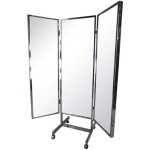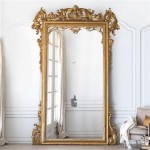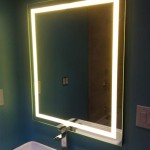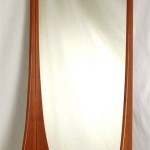Can Convex Mirrors Create Real Images?
Convex mirrors, characterized by their outwardly curved reflecting surface, are known for their ability to produce virtual, diminished, and upright images. This leads to the common question: can they ever create real images? The answer, under typical circumstances, is no. This article explores the underlying principles of image formation in convex mirrors and the conditions required for real image formation.
Key Points: Defining Image Types
- Real Image: Formed by the actual intersection of light rays. These images can be projected onto a screen.
- Virtual Image: Formed by the apparent intersection of light rays. These images cannot be projected onto a screen.
The curvature of a convex mirror causes incident parallel light rays to diverge after reflection. This divergence is the key reason why convex mirrors typically form virtual images. The reflected rays appear to originate from a point behind the mirror. The eye, interpreting the diverging rays, traces them back to this apparent point of origin, creating the perception of a virtual image located behind the mirror's surface.
Key Points: Convex Mirror Behavior
- Diverges incident light rays.
- Always forms virtual, upright, and diminished images under normal circumstances.
- The image appears to be located behind the mirror.
The mirror equation, 1/f = 1/do + 1/di, governs image formation in all types of mirrors. Here, 'f' represents the focal length, 'do' represents the object distance (distance of the object from the mirror), and 'di' represents the image distance (distance of the image from the mirror). For convex mirrors, the focal length is considered negative, reflecting the diverging nature of reflected rays.
Key Points: The Mirror Equation and Convex Mirrors
- Focal length (f) is negative.
- Object distance (do) is always positive.
- Image distance (di) is negative for virtual images.
Considering the sign conventions and the diverging nature of reflected rays, applying the mirror equation to convex mirrors always results in a negative value for 'di'. This negative sign signifies that the image is virtual and located behind the mirror. This reinforces the principle that convex mirrors, under normal circumstances with real objects placed in front of them, cannot form real images.
However, a real image can be formed by a convex mirror under specific, less conventional circumstances. If a converging beam of light is incident on the convex mirror, such that the virtual object is located behind the mirror, a real image can be formed. In this scenario, the object distance (do) becomes negative. With a negative do and a negative f, the mirror equation can yield a positive value for di, indicating a real image formation in front of the mirror.
Key Points: Forming a Real Image with a Convex Mirror
- Requires a converging incident beam.
- The virtual object is located behind the mirror.
- Object distance (do) is negative.
- A positive image distance (di) indicates a real image formed in front of the mirror.
This scenario, while theoretically possible, is less common in typical applications of convex mirrors. It requires another optical element to converge the light before it interacts with the convex mirror, effectively creating a virtual object behind the mirror. This contrasts with the typical use of convex mirrors where a real object placed in front produces a virtual image.
The distinct properties of diverging lenses are closely related to the behavior of convex mirrors. Both diverge incident light and typically form virtual, diminished, and upright images. This parallel behavior stems from the similar geometric principles governing their interaction with light.
Key Points: Comparison with Diverging Lenses
- Both diverge incident light.
- Typically form virtual, diminished, and upright images.
- Share similar geometric principles of light interaction.
In summary, while convex mirrors are generally associated with the formation of virtual images, a real image can be formed under specific conditions involving a converging incident beam and a virtual object. This scenario highlights the crucial role of sign conventions and the understanding of object and image distances in interpreting the mirror equation.
Can A Convex Mirror Produce Real Image
Can A Convex Mirror Form Magnified Image Quora
Can A Convex Mirror Form Real Image Quora

Can A Convex Mirror Produce Real Image When The Object Is Virtual And Vice Versa Concave If Yes How Will It Be Possible Why Quora
Can A Convex Mirror Form Real Image Quora
Can A Convex Mirror Produce Real Image When The Object Is Virtual And Vice Versa Concave If Yes How Will It Be Possible Why Quora
Can Convex Mirrors Produce Lateral Inversion Quora

Difference Between Real Image And Virtual
Is It Right A Convex Mirror Always Forms An Inverted Image Quora
Can A Convex Mirror Form Magnified Image Quora








